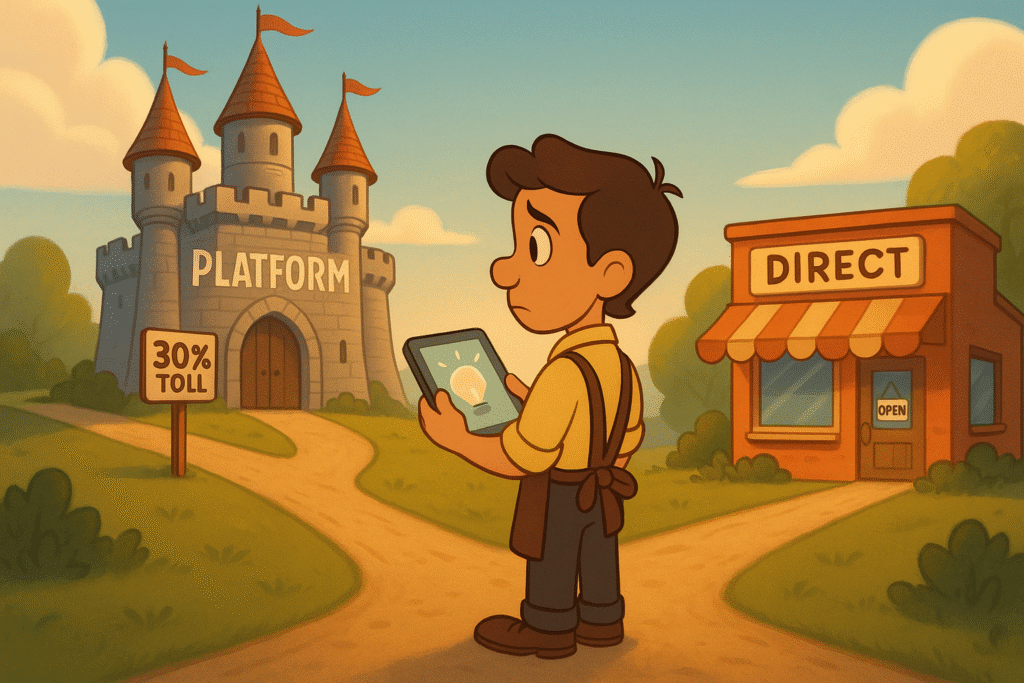
Hasn’t it sucked how you couldn’t buy a Kindle book directly through your iPhone app?
That finally changed this week.
Yesterday Amazon announced a new “Get Book” button in its iOS Kindle app, taking users directly to the purchase page without the old digital obstacle course.
No more jotting down titles and searching separately in your browser.
This might seem like a small UX improvement, but it represents a massive shift in control — and a HUGE warning for anyone selling digital products.
The change stems from a court ruling that banned Apple from collecting fees on purchases made outside its App Store. The judge didn’t mince words, calling Apple’s practices “anticompetitive” and a “gross miscalculation.”
For over a decade and a half, Apple’s 30% cut (recently reduced to 27% for some transactions) forced companies like Amazon and Spotify to route customers away from their apps for purchasing.
The alternative was to surrender nearly a third of every sale to the platform gatekeeper.
This email isn’t really about tech giants squabbling.
I want you to think HARD on the fundamental vulnerability of building your business on someone else’s platform.
In I Need That, I discuss how the most resilient products create direct relationships with customers.
When you rely exclusively on third-party marketplaces and platforms, you’re building on rented land — land where the landlord can change the rules overnight.
Think about how:
- Your visibility can be throttled by algorithm changes
- Your margins can be crushed by fee increases
- Your entire business model can be invalidated by policy shifts
Product Payoff: E-commerce giant Shopify built a $169 billion business by enabling brands to escape marketplace dependence. While Etsy sellers face ever-increasing fees and algorithm changes, Shopify merchants keep control over customer relationships, data, and economics.
This independence has proven particularly valuable during platform disruptions, with Shopify merchants experiencing 45% higher customer retention than marketplace-only sellers during the same period. Shopify is far from perfect, but independence and reliability are why I recommend the platform to most product startups.
Action for today: What about your sales channels? How much of YOUR revenue flows through platforms where you don’t control the customer relationship, or (like with Amazon, notably the victim in today’s story) don’t even know who your customers are? While these channels can be valuable acquisition tools, your long-term strategy should include paths to direct customer relationships.
Even if you can’t escape platform fees entirely, build systems to capture customer data and create opportunities for direct communication. Having platform customers register with you for free extra warranty coverage and added value can be highly worthwhile in the long run.
Has a platform policy change ever affected YOUR business? Tap that reply arrow and share your experience navigating these choppy waters.
Or reach out to my team of product distribution strategists at Graphos Product.
